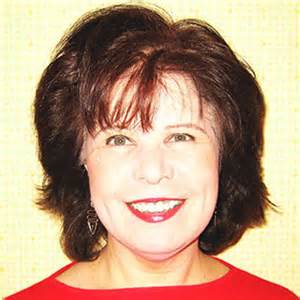 Mike Resnick said of Nancy Kress, “No one teaches writing basics better.” Here she gives us the basics on POVs. When to use one and not the other, why one works and another doesn’t.
Mike Resnick said of Nancy Kress, “No one teaches writing basics better.” Here she gives us the basics on POVs. When to use one and not the other, why one works and another doesn’t.
First person, second person, third person, alternating person, third person subjective, third person objective, third person omniscient, multiple third person, epistolary. Did I miss any?
I’m not even familiar with all the ones you listed! I think in terms of: first person, multiple first, third person, multiple third, second person (rare), omniscient, objective.
When do we use them and why, when do we not use them and why not?
That’s a big topic; entire books have been written on the advantages and disadvantages of each. Briefly: First person allows for a very tight reader identification with the narrator, as well as a more distinctive voice,which means it’s a good choice if your character has a distinctive voice. Its disadvantage is that you are limited to only what that character knows and observes. Third person allows more description and observation of the characters. Multiple third “opens up” a book to more settings, action in different places, more characters’ internal lives. It can, however, feel more fragmented if each POV character is not fully developed. Omniscient is hard to do well; it’s more than just going into anybody’s mind whenever you feel like it. Omniscient implies the presence of a strong authorial POV (the “all-knowing” presence of “omniscience.”) Objective goes into no character’s thoughts, recording only what a camera would see and hear. It works best for short stories, and even then can feel cold in less-than-skillful hands.
When is it a hard and fast rule to use/not use a certain POV, and when is one OK but another is better?
There are no hard and fast rules in writing. Everything is a trade-off: are you gaining more than you are losing with a particular point of view? What overall effect are you trying to achieve, and how much reader identification are you aiming for in this story?
Is there such a thing as a story that is more effectively told with several POVs, each chapter or scene with its appropriate POV, omniscient in one chapter, second person in the another chapter, epistolary in another?
That actually sounds like a mess. Unless you are aiming at a deliberate confusion of identity (as in Alfred Bester’s classic “Fondly Farenheit”), don’t mix first, second, and third. With multiple third, I usually keep to one POV per scene. Epistolary, as in inclusion of a letter or diary entry, works in any POV.
Suppose an author’s fan base has come to expect a certain storytelling style that involves certain POVs, whereas a different POV strategy might appeal to a broader audience but alienate the established readers.
This sort of thing is always a problem, if what you mean by a change of POV is “a different protagonist doing different things and written in a style different from previous books.” Then it’s not really a POV question but, rather, a content question. Readers will easily accept one book written in first and then another written in third, if the story being told is the same kind of story usually associated with that author. J. K. Rowlings’s Harry Potter books are all multiple third; so is her novel CASUAL VACANCY, but their audiences are entirely different.
I’m working on a short story with every character in every scene. One is dominating the situation, one is trying to moderate the situation with mixed success, one is trying to take control of the situation with no success, 2 are asking a lot questions and seeking a lot of assurance, 2 are preoccupied with each other and neutral toward the others. There’s lots of rapid fire, heated dialog; lots of action; lots of choreography. Everything about the plot and the characters is revealed in real time through the interaction of the characters; no info dumps, no flashbacks, no descriptions, no body language, no inner narrative; strictly the words and activity of the characters. Which POV/POVs do I use?
It’s hard to be sure from that description, but if this were my story, I’d probably tell it in either first-person or limited third. In both cases, I would give the internal reactions and thoughts of only one character, whose story it would then become, and that choice would be the character who either has the most at stake or is the most capable of change. The events of a story should affect the protagonist,if they don’t, why should I, the reader, be affected?
Is POV a standard part of the curriculum in most workshops?
Yes, either through direct lecture or, if not addressed directly, it inevitably comes out in critique sessions, as in “You are switching POV on page 6,why?” or “You cannot describe a character’s appearance in first person unless he’s thinking about his own looks” or “This story might be better told from the wife’s POV and not the husband’s.” By the end of the first paragraph an author has usually committed to a POV, so it’s a good idea to consider your options before you begin.
Nancy Kress’ writing craft books:
BEGINNINGS, MIDDLES, AND ENDS
DYNAMIC CHARACTERS
CHARACTERS, EMOTION, AND VIEWPOINT
Meet up with Nancy Kress at the Hugo House workshop in Seattle, Washington and at Taos Toolbox workshop in Taos, New Mexico.
 Carl Slaughter is a man of the world. For the last decade, he has traveled the globe as an ESL teacher in 17 countries on 3 continents, collecting souvenir paintings from China, Korea, Thailand, Vietnam, and Egypt, as well as dresses from Egypt, and masks from Kenya, along the way. He spends a ridiculous amount of time and an alarming amount of money in bookstores. He has a large ESL book review website, an exhaustive FAQ about teaching English in China, and a collection of 75 English language newspapers from 15 countries.
Carl Slaughter is a man of the world. For the last decade, he has traveled the globe as an ESL teacher in 17 countries on 3 continents, collecting souvenir paintings from China, Korea, Thailand, Vietnam, and Egypt, as well as dresses from Egypt, and masks from Kenya, along the way. He spends a ridiculous amount of time and an alarming amount of money in bookstores. He has a large ESL book review website, an exhaustive FAQ about teaching English in China, and a collection of 75 English language newspapers from 15 countries.

In The Fall of Hyperion, Dan Simmons mixes first- and third-person point of view in a way I found very effective. The character Joseph Severn is written in first person, while all the other characters are done in third. There’s a framing device used in which Severn is dreaming about what happens to the other characters, but I’ve always thought something similar could be done without that sort of device.
This is an extremely interesting topic because I am two chapters into my second novel. (The first was pulp for practice.) It will be told in first person. Here is another good link on the subject:
http://robynbavati.blogspot.com/2011/01/writing-class-alternating-first-person.html
David John Baker’s comment forced me read Hyperion. (I made it 3 chapters before the opera of ‘snatched out of the soup’ jargon turned me off.) But the device seems perfectly valid, and I’m going to come up with a way to expand the first person’s viewpoint. This seems a perilous path for a rookie of moderate intelligence. But hey, maybe this technique will bring back some of that neuron jungle I’d cleared with my 151 rum machete?
Remind me to credit you, David, if it ever get’s published. Darrett
Nancy Kress is always helpful, and this article is no exception. Nancy has a way of relating information so it can be easily comprehended. I first became enthralled with an article which then led to buying Beginnings,Middles and Ends which led me to buying her other books as they came out.
Congratulations on the interview. You shouldn’t judge a magazine solely by its interviewees, but seeing information from Nancy reassured me about the quality of Diabolical Plots.
I need some advice. When writing in 1st person, and jumping to another POV (not the lead character), should that other POV be written in 1st or 3rd person? I’ve seen this done both ways in professional wiring. What are your thoughts?